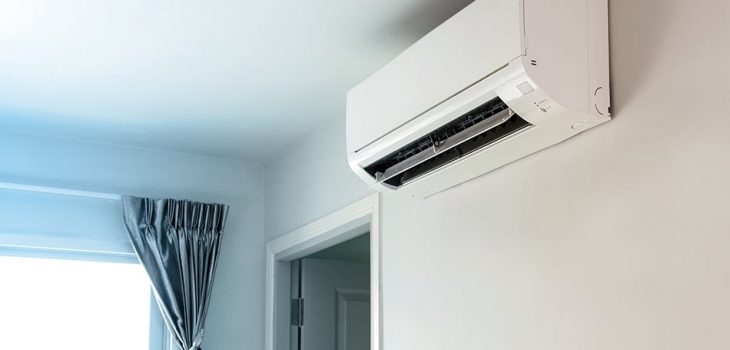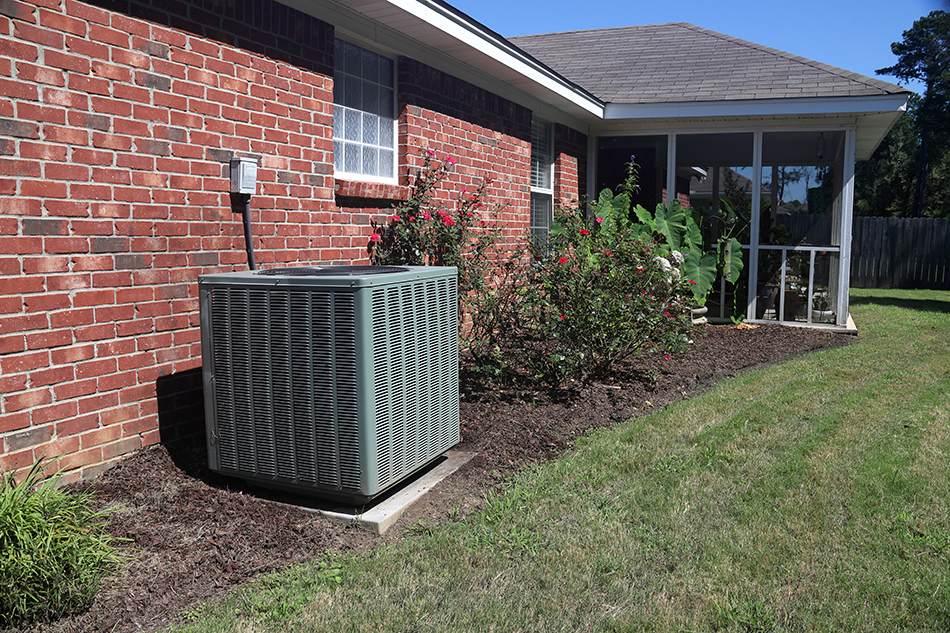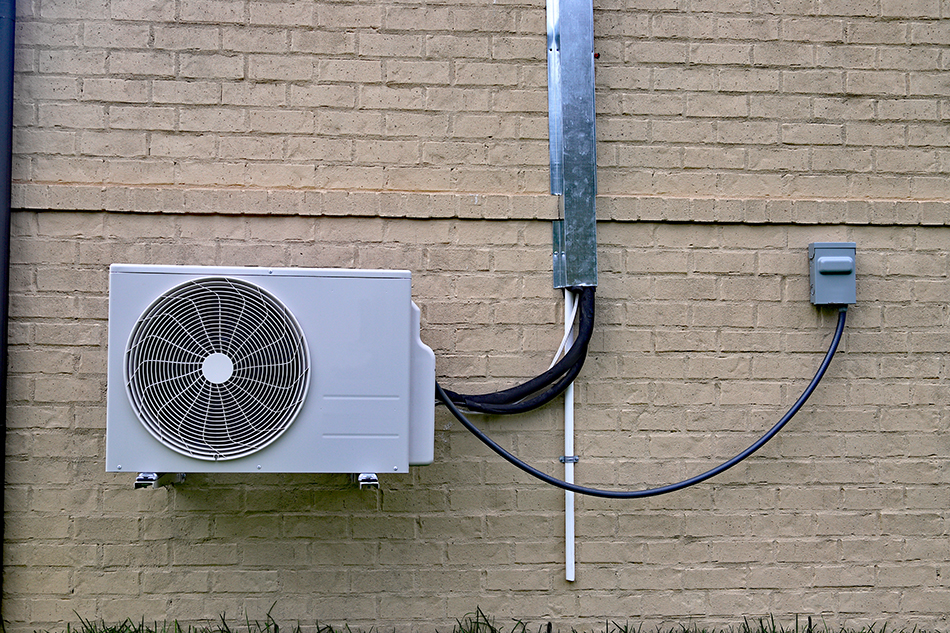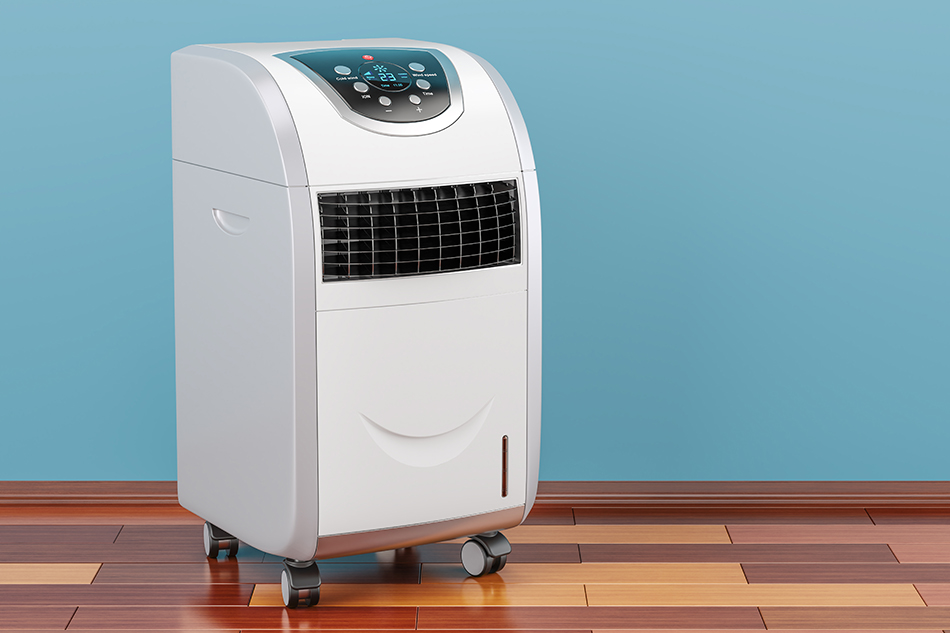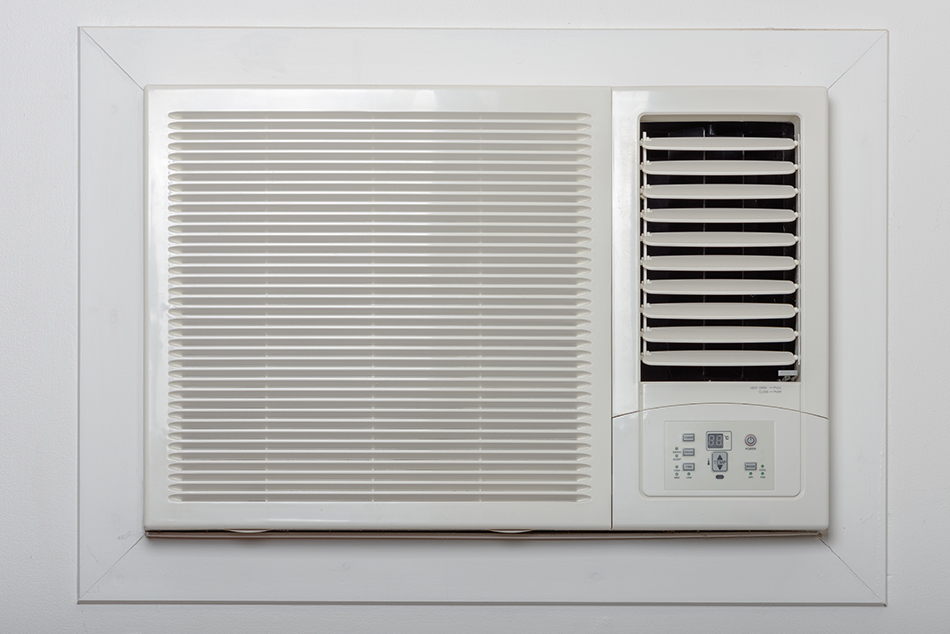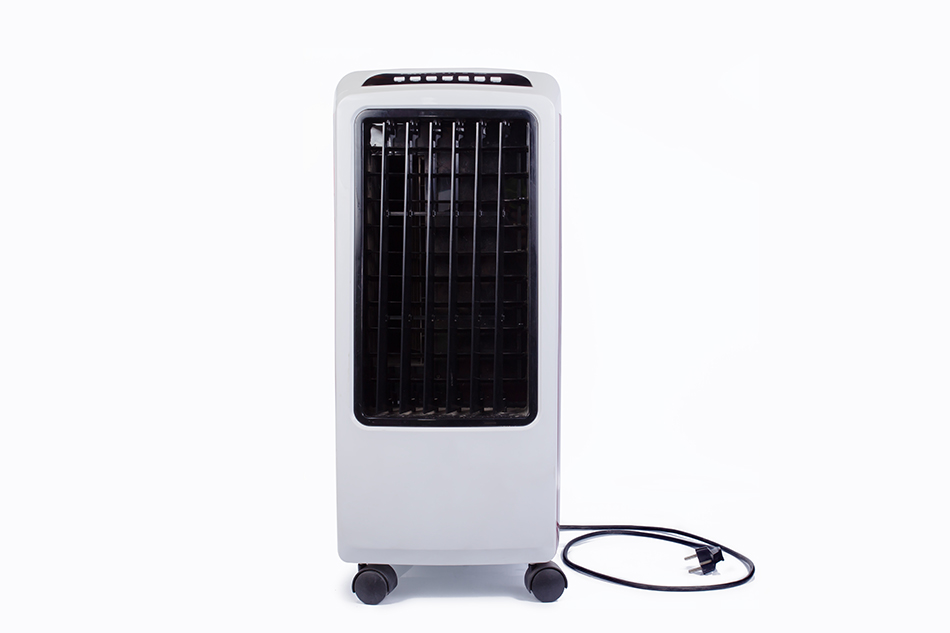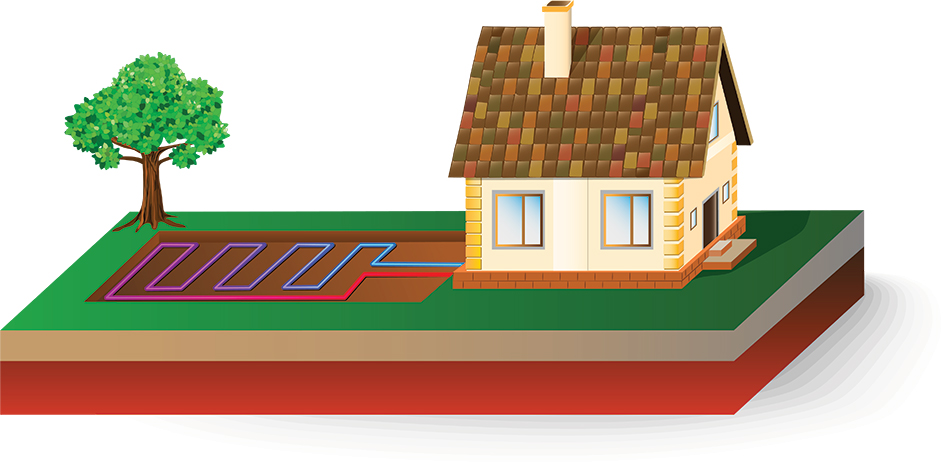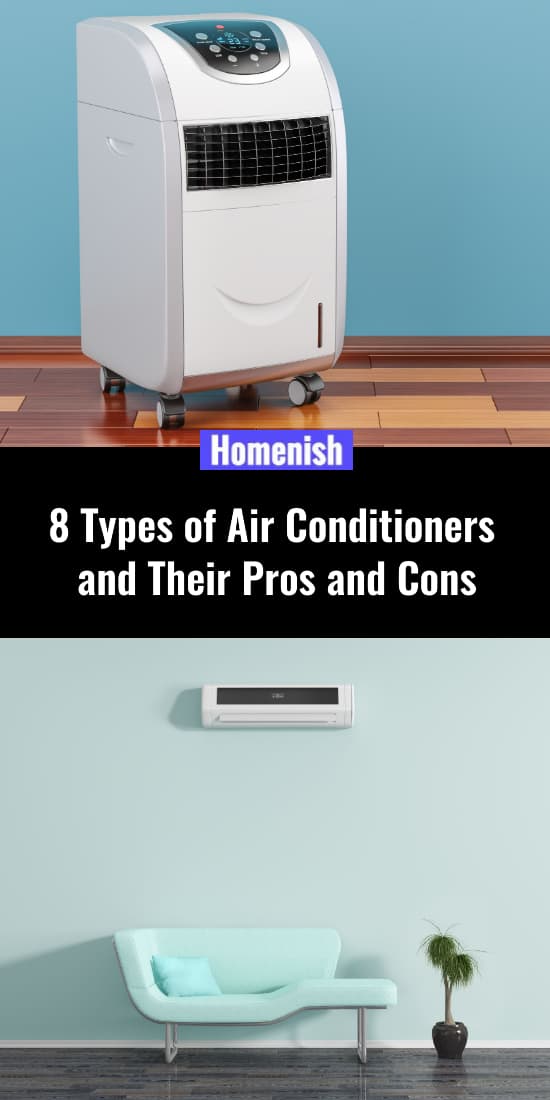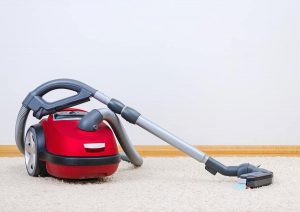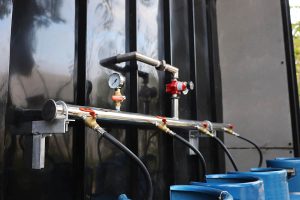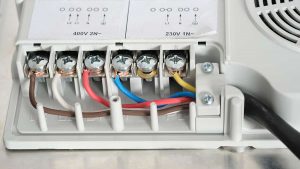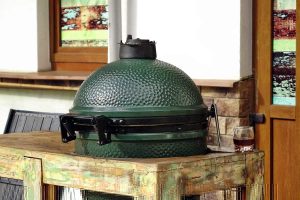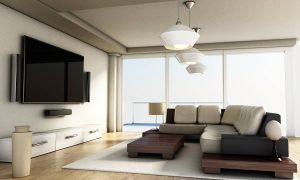There is nothing quite as satisfying as a blast of cool air during hot summer months. If you’re considering installing air conditioning for your home, then you’ll definitely want to get your money’s worth. Choosing the right AC units is not a decision to be taken lightly. This is why I’ve created a list of 8 types of air conditioners with their pros and cons so you can make an informed decision.
1. Central Air Conditioners
Central air conditioners are the most commonly used systems in the US. For those who live in large homes and want to cool several rooms at once, a central air conditioner will be the most effective option.
How it works: a central AC system cools air in a compressor, which is located outside of the property. With the help of a blowing fan, the cool air is delivered through ducts while the warm air is extracted out of the house through the exhaust system. How cool you want your rooms to be can be controlled using a wall-mounted thermostat.
Pros:
- Thanks to the duct system, a central AC unit can effectively cool all the rooms throughout the house instead of just one room
- This system uses filters to improve the air quality of the house, which help remove dust or pollen from the air
- Since these AC systems can cool the air throughout the house, the level of humidity is reduced. Lower humidity means a more comfortable indoor living environment
- Central ACs provide a more comfortable temperature control throughout the entire house so no more warm or cold spots
Cons:
- Central aircons use a lot of energy. While the newer models are more energy efficient than their predecessors, they still use more energy than window or wall-mounted units
- Ductwork installation requires the expertise of HVAC technicians
- Higher maintenance costs
- The chances of poorer air quality are higher due to possible leaks in the ductwork. Dirty or leaking ductwork can lead to dust or mold particles circulating through your home’s air supply
2. Ductless Mini Split Systems
Ductless mini split systems work the same way as central ACs – but without the ducts. These systems produce cool air exactly the same way as the central air conditioners by drawing in the warm air from the rooms and absorbing the heat. The reason they are called split systems is due to the fact that the units consist of two or more components: the condenser unit (installed outside) and the compact blower or evaporative units, which are normally mounted on the walls of your rooms. With a mini-split system, you must install individual units in each room of your home.
Pros:
- Easier to install than ducted systems
- More energy efficient as air transports directly into the rooms, without any energy loss
- Easier to add the units to new homes
- Individual temperature control settings for each room
- No need to have an existing ductwork for installing split systems
Cons:
- Many find the split systems unattractive
- Installation or removal is difficult and must be undertaken by a professional HVAC specialist
- All the doors and windows must remain closed in order for the rooms to get warmed or cooled effectively
- Regular maintenance, such as air filter cleaning and changing the hose is required to ensure the wall unit’s longevity.
3. Packaged Air Conditioners
A packaged air conditioning system is an all-in-one cooling and heating that’s suitable for homes without an indoor furnace. This AC’s compressor, condenser, and evaporator are installed in one unit, which is typically placed on a concrete slab close to the house’s foundation or on the roof.
How it works: this system is installed outside and the filtered cool or warm air runs through a ducted secure hole from the roof or the wall. Packaged AC systems come in different fuel connections, including gas/electric, dual-fuel, and heat pumps.
Pros:
- Multiple options for installation location
- Quieter operation indoors
- Low maintenance
- Cheaper equipment cost than ductless split systems
Cons:
- Less efficient than split air conditioners
- Not as long lasting as central ACs since the harsh weather can damage the outside unit
4. Portable Air Conditioners
Portable aircons are similar to window ACs as they are both self-contained systems. This means the portable aircons have all their parts contained in one unit just like window ACs. These types of air conditioning systems are more affordable than central ACs and are a more convenient option for quickly cooling down small rooms. Unlike a ceiling fan that you can’t take from one room to another, a portable AC can easily be moved to any room you want. Some models even have wheels to make the task of moving them easier.
Pros:
- Won’t affect the look of your room unlike the window and split system units
- No installation required
- Portable ACs provide customized cooling options for any room of the house
- Unlike the ductless mini split systems that can’t be moved to new areas of the house, you can easily take your portable AC anywhere you want whenever you need a cooling system. All that’s needed in the room is a power supply
Cons:
- These ACs cost more than window units
- Can be very noisy because of the compressor being housed inside the unit
5. Window Air Conditioners
Window air conditioning systems consist of a self-contained unit that’s installed in a window or through a hole in an exterior wall. This temporary cooling solution, however, is not powerful enough to cool an entire house. Only small and medium-sized properties can benefit from window ACs. These units are simple to install and remove as they need to be taken out of the window before the cold weather arrives.
Pros:
- Window ACs are highly convenient to cool down individual rooms
- They are cheaper than central air conditioning systems
- Easy to install and remove so you can take them with you to your new home
- No ductwork needed
Cons:
- Window ACs can be noisy during operation. The older models are noisier than central ACs but quieter than portable aircons
- If you live in an apartment complex, you may not be allowed to install window ACs as they are visible from outside
- The window you place them in must be close to an electric outlet
- They block the view from the window
- After prolonged use, the units leak condensation and can cause mold damage
- Can be a security risk, especially if they are installed on the windows of lower floor
- Some homeowners think they are an eyesore
6. Evaporative Coolers
Evaporative coolers, also known as swamp coolers, work differently to standard aircons. Instead of featuring refrigerant, they use moist pads that cool the air and circulate it around the home. The standard ACs remove humidity from the air, but with this system, humidity is added to the air instead. With this in mind, swamp coolers tend to be particularly popular in drier areas of the US, such as the Southwest. These coolers are typically installed on the roof.
Pros:
- Evaporative coolers use much less energy than other air conditioners since the fan is the only component that uses electricity
- Unlike the standard ACs that are detrimental to the environment, these coolers are perfect for the eco-conscious homeowners who want to reduce their carbon footprint
- Ideal for dry climates as it adds humidity to the air
- Cheaper installation and purchase cost than standard ACs
- Quite easy to maintain. You only need to replace the pads once or twice a year and clean the pads regularly to prevent them from dirt and dust clogging
Cons:
- Your home won’t get cooled down effectively when the outdoor temperature gets above 95 degrees fahrenheit
- Not suitable for humid climates
- Require more maintenance than standard ACs
- Prone to leaks. If the unit is installed on the roof, water from the leaks can stain and eventually damage the roof shingles, thus causing you to replace them often
- Swamp coolers use a lot of water
- Safety risk as you need to climb on the roof to perform maintenance on the cooler
- Since these coolers are normally located on the roof, they leave a large hole on the roof, which can look unsightly if you eventually replace them
7. Geothermal Cooling and Heating
Geothermal technology is rapidly evolving in the US and other parts of the world. For those who are looking for an eco-friendly type of AC system, the relatively new geothermal cooling and heating is the best solution. Thanks to its ground insulating properties, the temperature is maintained at around 50 degrees fahrenheit all-year-round. No matter what the weather is like outside, the temperature in the ground below remains unchanged through the setup underground loop. The geothermal heating and cooling system takes advantage of the consistent temperature below the ground by heating and cooling your home effectively. Instead of using refrigerant, most of these systems use water and minimal electricity to power the pump, compressor, and the fan. This is the reason geothermal systems don’t burn fossil fuels, thus making it ideal for eco-conscious homeowners.
Pros:
- A geothermal heat pump requires less energy to operate so your energy costs are significantly lower. Furthermore, this system doesn’t need combustion to produce heat or exhaust
- By using a geothermal heat pump, there is no need to worry about installing a large unit to compromise your home’s curb appeal. The loops of this system are buried 4 or 5 feet under the ground and completely out of sight
- Very quiet operation. The indoor unit is not as noisy as the split systems
- In the summer months, the geothermal heat pump pulls the warmth from the ground so it can be used to heat your water tank in an energy efficient way
Cons:
- Difficult to install as not all HVAC specialists are familiar with this system. Improper installation of the loop in the ground will result in inefficient operation
- The loop must be situated in the right place in order to function properly. Not all properties are suitable for geothermal installation. For example, if your home is located in a rocky place, the horizontal loop will be difficult to install
8. Variable Speed Air Conditioners
Variable speed air conditioners have compressors that run at different speeds. This technology allows the AC unit to operate at the most comfortable speed without compromising energy efficiency. The compressor of this unit pumps refrigerant to and from the coils. In extremely hot temperatures, the compressor’s speed is accelerated and the refrigerant cools your home more quickly. In milder weather, the compressor’s speed slows down and cools the house more slowly. In short, the variable speed AC runs for longer periods but at a more energy efficient pace. What’s more, with this system, you have the flexibility to control and adjust the thermostat whenever you please.
Pros:
- Your home will benefit from consistently comfortable temperatures. This means no hot or cold spots throughout your house as the longer runtime of this system helps circulate the cool air more evenly
- Quieter operation than standard aircons. Because of the lower speeds, the system operates much quieter than central ACs and split systems
- More humidity is removed than standard counterparts since these types of aircons run longer at a slower pace
- Better humidity control is especially welcome during hot and muggy summers
- Lower electricity bill
Cons:
- A better performing AC system comes at a cost
- Repair costs are also higher than standard air conditioners. Since variable speed systems consist of complex parts, when they fail, you’ll be faced with a higher repair bill
Conclusion
With a wide variety of different HVAC systems available, the main deciding factor comes down to the cost of the units, their installation process, and your home’s needs. For larger properties, for example, a central air conditioning system may be a more feasible – and cheaper – option than a split or window unit. By scouring through the above list of air conditioning types, you’ll hopefully be able to make the right choice.
